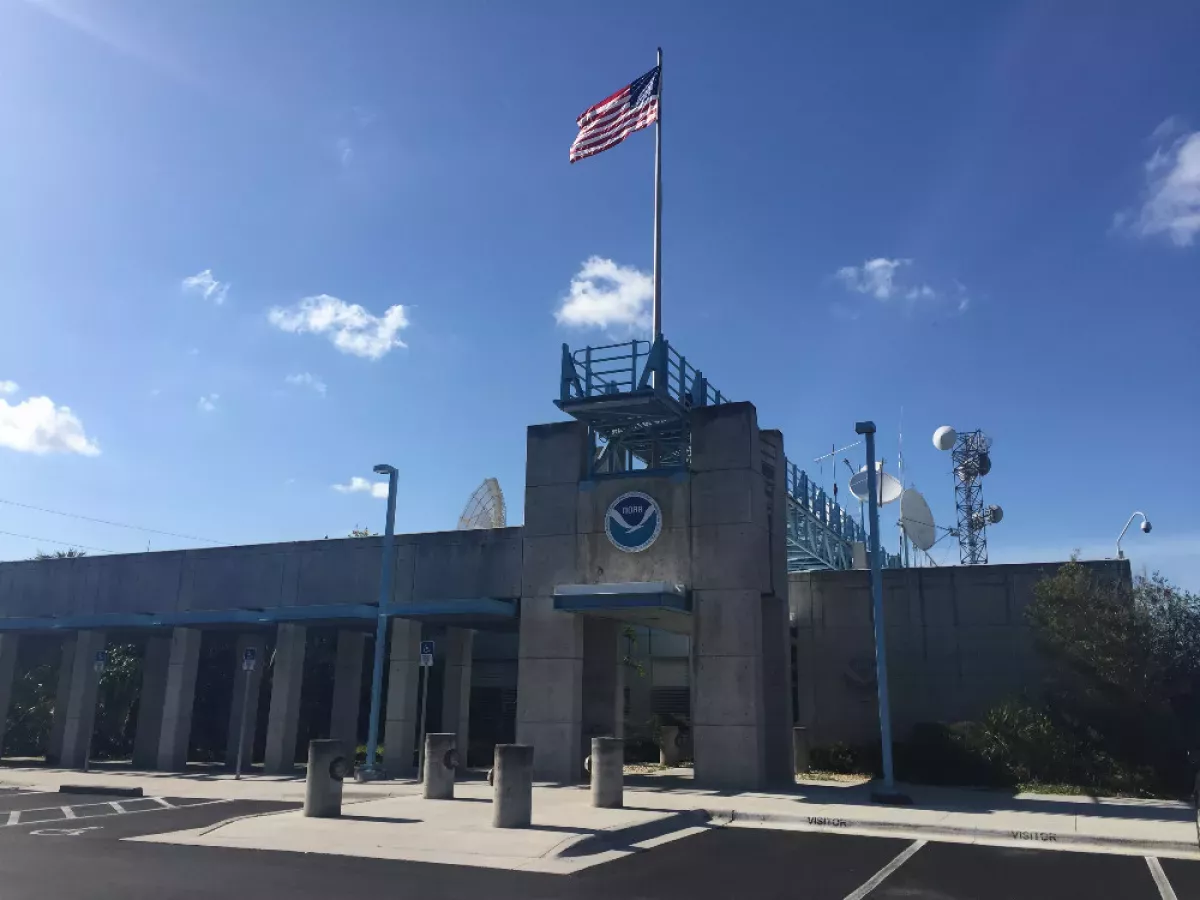The National Hurricane Center (NHC), a division of NOAA/National Weather Service, monitors and forecasts tropical weather systems in the Atlantic and northeast Pacific oceans. It operates from the Florida International University campus in Miami, Florida. The NHC plays a crucial role in issuing warnings and predictions related to hurricanes and tropical storms, helping to protect lives and property in vulnerable coastal areas.
1935: Regional hurricane offices assume responsibility
In 1935, the responsibility for hurricane warning/advisory duties was transferred to regional hurricane offices, previously held by the central office in Washington. The concept of the Atlantic hurricane season was established, and hurricane advisories were issued every six hours by these regional offices.
1947: Tropical cyclone naming begins
In 1947, the naming of Atlantic tropical cyclones began using the Joint Army/Navy Phonetic Alphabet, a significant step towards standardizing identification and communication about these storms.
1950: Miami Hurricane Warning Office begins preparing annual hurricane season summary articles
In 1950, the Miami Hurricane Warning Office initiated the preparation of annual hurricane season summary articles, providing a comprehensive overview of each year's tropical cyclone activity.
1953: United States Weather Bureau begins naming storms with human names
In the 1953 Atlantic season, the United States Weather Bureau began naming storms that reached tropical storm intensity with human names, moving away from the Joint Army/Navy Phonetic Alphabet used previously.
1954: Forecasts extended one day into the future
In 1954, forecasts within the hurricane advisories were extended to one day into the future, enhancing the timeframe for preparation and response.
1958: Tropical cyclone reports available for Atlantic Ocean basins
In 1958, the agency began issuing tropical cyclone reports for every tropical cyclone in the Atlantic Ocean basins. These reports summarize the storm's history, statistics, casualties, damages, and post-analysis.
1961: Forecasts extended to two days into the future
In 1961, forecasts within the hurricane advisories were extended to two days into the future, providing an increased timeframe for preparation.
1964: Forecasts extended to three days; Miami HWO moves to University of Miami campus; Modern format for tropical cyclone reports
In 1964, several key events occurred: Forecasts within hurricane advisories were extended to three days into the future. The Miami Hurricane Warning Office (HWO) moved to the campus of the University of Miami. Additionally, the Miami HWO tropical cyclone reports adopted their modern format.
1965: Miami HWO referred to as the NHC
In 1965, the Miami Hurricane Warning Office (HWO) began to be referred to as the NHC, which stood for the National Hurricane Center.
1967: Tropical Analysis and Forecast Branch created
In 1967, the Tropical Analysis and Forecast Branch (TAFB) was created as part of the National Hurricane Center. Initially known as the Tropical Satellite Analysis and Forecast unit and later the Tropical Analysis Center, the TAFB is responsible for high seas analyses and forecasts for tropical portions of the Atlantic and Pacific.
1973: National Meteorological Center gains advisory responsibility for inland tropical depressions
In 1973, the National Meteorological Center assumed advisory responsibility for tracking and publicizing inland tropical depressions, expanding its role in monitoring tropical cyclone activity.
1977: World Meteorological Organization assumes control of the Atlantic hurricane naming list
In 1977, the World Meteorological Organization assumed control of the Atlantic hurricane naming list, standardizing the process internationally.
1978: NHC offices move off the campus of the University of Miami
In 1978, the National Hurricane Center (NHC) offices moved off the campus of the University of Miami to the IRE Financial Building, located across U.S. Highway 1.
1979: Male names added to hurricane list
In the 1979 season, male names were added to the hurricane naming list, which had previously only included female names.
1983: Hurricane warning offices remain active
In 1983, hurricane warning offices remained active, continuing their role in providing crucial information during tropical cyclone events.
1984: NHC separated from the Miami Weather Service Forecast Office
In 1984, the NHC was separated from the Miami Weather Service Forecast Office, establishing its independence in operations and management.
1987: Lixion Avila joins NHC
In 1987, Lixion Avila began working at the National Hurricane Center (NHC), ultimately becoming a senior hurricane specialist.
1988: NHC gains responsibility for eastern Pacific tropical cyclones
In 1988, the NHC expanded its responsibilities to include eastern Pacific tropical cyclones, following the decommissioning of the Eastern Pacific Hurricane Center in San Francisco.
1988: Tropical cyclone reports available for Eastern Pacific Ocean basins
In 1988, tropical cyclone reports became available for the Eastern Pacific Ocean basins, providing comprehensive summaries of each storm's synoptic history, statistics, casualties, damages, and post-analysis.
1992: Hurricane Andrew damages NHC facilities
In 1992, Hurricane Andrew damaged the WSR-57 weather radar and anemometer on the roof of the NHC/Miami State Weather Forecast offices, causing significant disruption to operations.
April 1993: WSR-88D NEXRAD system installed
In April 1993, a WSR-88D NEXRAD system was installed near Metro Zoo, close to where Hurricane Andrew had made landfall, replacing the damaged WSR-57 radar system.
1995: NHC role in monitoring and advising
From 1995 through 2010, the National Hurricane Center (NHC), through its Hurricane Specialist Unit (HSU), employed hurricane specialists who worked in shifts, monitoring weather patterns and issuing advisories for tropical or subtropical cyclones.
1995: NHC moves into new facility; name changed to Tropical Prediction Center
In 1995, the NHC relocated to a new hurricane-resistant facility on the campus of Florida International University. In the same year, its name was changed to the Tropical Prediction Center (TPC).
1999: Stacy Stewart joins NHC
In 1999, Stacy Stewart began working at the National Hurricane Center (NHC), eventually becoming a senior hurricane specialist.
1999: Preliminary Reports renamed to Tropical cyclone reports
Until 1999, the reports were formally known as Preliminary Reports, but in 1999, the agency changed the report's official name to Tropical cyclone reports.
2001: Joint Hurricane Testbed established
In 2001, the Joint Hurricane Testbed (JHT) was established as a joint operation between the National Oceanic and Atmospheric Administration (NOAA) and the United States Weather Research Program. This initiative aimed to accelerate the transition of tropical cyclone-related research into forecast operations.
2001: Forecasts extended to five days
In 2001, the forecast timeframe within hurricane advisories was extended to five days into the future, providing significantly more lead time for preparations and evacuations.
2008: NHC Fiscal year budget
In 2008, the National Hurricane Center's (NHC) budget for the fiscal year was $6.8 million. The NHC staff consisted of 66 members, including 12 managers. The NHC is one of the nine national centers that compose the National Centers for Environmental Prediction (NCEP).
October 1, 2010: Tropical Prediction Center renamed NHC
On October 1, 2010, the Tropical Prediction Center (TPC) was renamed back to the National Hurricane Center (NHC). The group formerly known as the NHC became known as the Hurricane Specialist Unit (HSU).
2010: NHC Role in monitoring and advising
From 1995 through 2010, the National Hurricane Center (NHC), through its Hurricane Specialist Unit (HSU), employed hurricane specialists who worked in shifts, monitoring weather patterns and issuing advisories for tropical or subtropical cyclones.
2013: National Meteorological Center renamed for a second time
In 2013, the National Meteorological Center, formerly known as the Hydrometeorological Prediction Center, underwent a second renaming, although the new name isn't explicitly mentioned in the text.
2015: Hurricane Forecast Improvement Program goal
By 2015, the Hurricane Forecast Improvement Program (HFIP) aimed for a 20 percent improvement in the numerical weather prediction models provided to the NHC by the National Centers for Environmental Prediction.
April 30, 2020: Lixion Avila retires from NHC
On April 30, 2020, Lixion Avila retired from the National Hurricane Center (NHC) after working there since 1987 as a senior hurricane specialist.
2020: Hurricane Forecast Improvement Program goal
By 2020, the Hurricane Forecast Improvement Program (HFIP) aimed for a 50 percent improvement within tropical cyclone track forecasting and intensity guidance.
January 3, 2022: Stacy Stewart retires from NHC
On January 3, 2022, Stacy Stewart retired from the National Hurricane Center (NHC). A senior hurricane specialist who also served in the U.S. Navy reserves, he had worked at the NHC since 1999 and retired due to injuries sustained in Iraq.
Mentioned in this timeline

Radar is a radiodetermination system using radio waves to detect...

Washington D C is the capital city and federal district...

San Francisco is a major commercial financial and cultural hub...

Miami is a major coastal city located in Florida United...
Florida a state in the Southeastern United States is largely...
Jamaica is an island country located in the Caribbean south...
Trending

2 months ago Beyoncé and Jay-Z Spotted in Qatar: Headscarf Sparks Debate.
5 months ago USDA invests $152M in Iowa rural communities, announced by Secretary Rollins at Iowa State Fair.
9 months ago Suriname faces discrimination concerns, Dutch appeal, and a company rebranding for exploration.

7 months ago Robert Plant reflects on Led Zeppelin's best performance and early vocal dislikes.

3 months ago Heidi Klum Shares Rare Family Photos Celebrating Daughter Lou's Sweet 16th Birthday
2 months ago Heavy Downpours and Strong Winds Expected to Impact Boston Commute on Monday
Popular

Stranger Things created by the Duffer Brothers is a popular...

XXXTentacion born Jahseh Dwayne Ricardo Onfroy was a controversial yet...
The Kennedy Center Honors are annual awards recognizing individuals and...
Turning Point USA TPUSA is an American nonprofit organization founded...

Bernie Sanders is a prominent American politician currently serving as...

Candace Owens is an American conservative political commentator and author...
